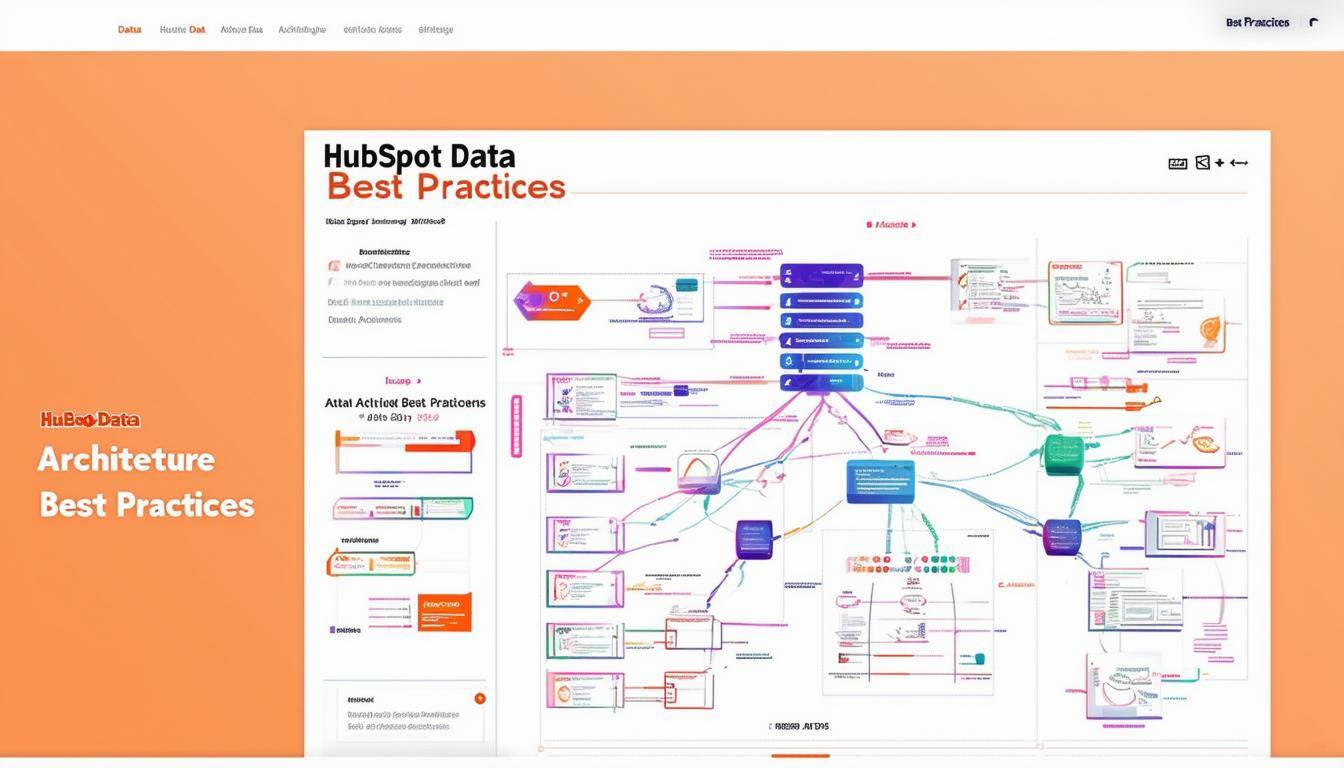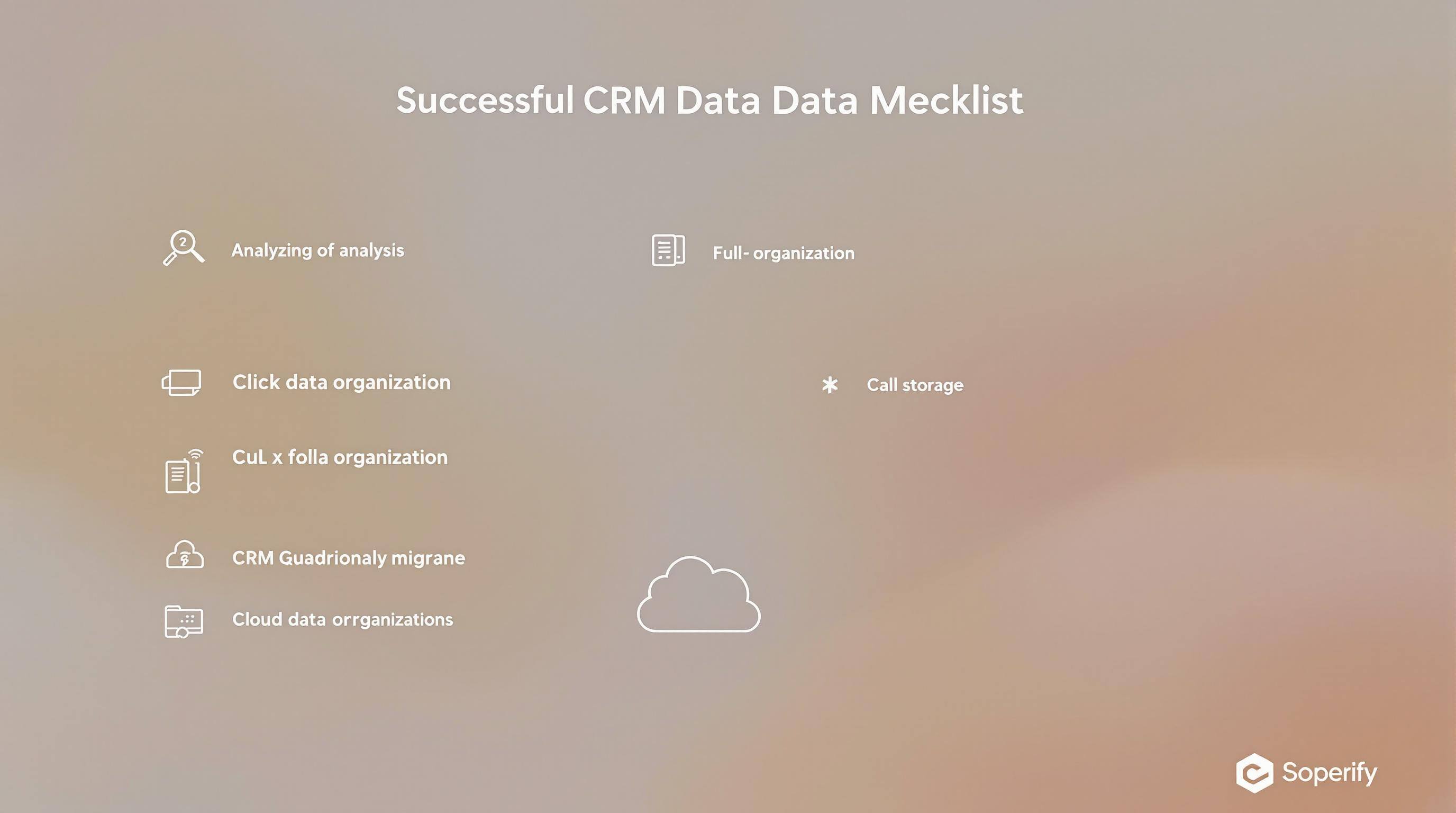Attribute Naming Conventions for HubSpot
Good naming conventions in HubSpot are essential for keeping your data organized, easy to find, and reliable. Without them, teams face issues like wasted time, errors in workflows, and inaccurate reports. This is especially important for large teams or Enterprise accounts where multiple users share data.
Key Takeaways:
- Use Prefixes: Add prefixes like
contact_ordeal_to categorize attributes and avoid confusion. - Be Consistent: Stick to a uniform naming format for all properties (e.g.,
[Object] Primary_Property - Description). - Keep Names Clear & Concise: Avoid vague terms like
status- usecustomer_statusinstead. - Standardize Dates: Use formats like
YYYY-MM-DDfor clarity and compatibility. - Document Rules: Store your conventions in a shared resource for team-wide adherence.
By following these practices, you’ll reduce errors, improve collaboration, and make your HubSpot system scalable as your business grows.
Related video from YouTube
1. Use Object-Specific Prefixes
Adding object-specific prefixes to your data attributes makes organization easier and minimizes confusion. This is especially helpful in Enterprise HubSpot portals, where multiple teams work with shared data. Prefixes help categorize attributes and avoid naming conflicts, particularly in APIs and integrations.
"99% of being really, really good at HubSpot is really having a good grip on properties and how data flows in and out of them and how you use them creatively." - Max Cohen, HubSpot Expert
Here are some commonly used prefix patterns:
- contact_ for contact properties
- company_ for company properties
- deal_ for deal properties
- prod_ for product properties
These prefixes are especially useful in APIs and integrations, as they help prevent naming conflicts and make data mapping between systems easier.
Example of Prefix Usage
| Object Type | Prefix Example | Attribute Example |
|---|---|---|
| Contact | contact_ | contact_signup_date (tracks user registration) |
| Company | company_ | company_industry_segment (identifies business sector) |
| Deal | deal_ | deal_forecast_amount (tracks opportunity value) |
| Product | prod_ | prod_inventory_level (monitors stock status) |
Tips for Implementing Prefixes
- Keep them short but clear: Ensure they are easy to identify without being overly long.
- Be consistent: Apply the same prefixes across all custom properties.
- Document your conventions: Create a reference guide to ensure all team members follow the same rules.
Once you've established prefixes, the next step is to focus on consistent naming formats for all your attributes.
2. Use a Consistent Naming Format
A consistent naming format helps keep your HubSpot portal organized and easy to navigate. It improves collaboration, reduces confusion, and makes scaling your system much smoother.
Standard Naming Patterns
| Component | Example |
|---|---|
| Object Type | [Contact] - Identifies the HubSpot object |
| Primary Property | Lead Status - Describes the main attribute |
| Description | Setting Status to Working - Explains the specific use |
Asset-Specific Examples
- Workflows: [Contact] Lead Status: Setting Status to Working
- Lists: Event Attendees - Holiday Trade Show - 12/2022
- Reports: [Deal] Deal Stage: Average Time Spent in Each Stage
Tips for Implementation
- Use Clear Identifiers: Add markers like "EM" for emails or "LP" for landing pages to make asset types instantly recognizable.
- Document Thoroughly: Provide examples and account for edge cases to ensure everyone understands the naming system.
- Make It Search-Friendly: Structure names so they’re easy to find using HubSpot's search and filtering tools.
- Add Time Markers: Use formats like YYYYMM (e.g., 202501) or YYQ# (e.g., 25Q1) to track when assets were created or updated.
"By having these types of fields it can be as useful, if not more useful than folders so long as you know how to search for things." - HubSpot Community User
A consistent naming format can save time and effort. HubSpot experts highlight a case where standardized naming reduced time spent searching for and recreating assets by 50%. Keep your system simple yet scalable, especially for new users. Clear and concise attribute names are the next priority to avoid misunderstandings.
3. Balance Clarity and Brevity
Balancing clarity and brevity is crucial for keeping your attributes functional and easy to use. When done right, it improves efficiency and ensures smooth navigation within HubSpot.
Optimal Naming Patterns
| Approach | Less Effective | More Effective | Explanation |
|---|---|---|---|
| Internal Name | Date_Customer_Signed_Up | Customer_Signup_Date | Clear and concise without losing meaning |
| List Names | 2025_Newsletter_Subscribers_From_Website_Form | [NL] Website Subscribers 2025 | Shorter while keeping the purpose intact |
Guidelines for Clear and Efficient Naming
-
Use Descriptive Prefixes and Labels
Add prefixes like "[OPS]" for operations or "[NL]" for newsletters to provide context at a glance. Use short internal names paired with descriptive labels for user-facing displays.
Example: Use "contact_status" as the internal name and "Contact Engagement Status" as the display label. -
Simplify Form Fields
Shorten long form questions to internal names that are easy to read, such as changing "Describe your legal issue" to "Legal_Issue." Keep the full question visible in the form label if needed. -
Make Names Easy to Search
Choose terms that are clear and simple for teams to locate quickly. Avoid extra words or overly complex structures.
"The main thing is to decide on your naming convention and stick to it consistently." - CRM Expert [1]
While attribute name length doesn’t impact storage much, it plays a big role in user experience. Short, clear names help teams find what they need fast, without unnecessary searching.
Next up: eliminating ambiguity in attribute names to further improve usability.
4. Avoid Ambiguity in Attribute Names
Clear attribute names are essential for keeping your data accurate and ensuring smooth workflows in HubSpot. Vague or unclear names can cause confusion, lead to data entry mistakes, and result in inaccurate reporting.
Common Sources of Ambiguity
| Issue | Poor Example | Better Example |
|---|---|---|
| Generic Labels | status | customer_status |
| Similar Names | industry_type, industry_category | [BIZ]_industry_type, [CONTACT]_industry |
| Unclear Data Type | last_contact | last_contact_date |
Clear Naming Strategies
Use Descriptive Labels and Prefixes
Choose names that clearly describe the attribute's purpose and type. For example, instead of "status", use something like "Customer Status" or "Date - Last Interaction." Adding prefixes such as SALES_ (for sales), MKT_ (for marketing), or FIN_ (for finance) can also help categorize attributes and avoid naming conflicts.
Group Properties Logically
Organize related attributes using consistent naming patterns. For example, customer preferences could follow a format like "Preferences - [Specific Preference]" to make them easy to locate and understand.
"If you keep things neat and tidy and you can keep to naming conventions for your assets in HubSpot, I've got good news: you've opened the door to better list segmentation and reporting." [1]
Maintaining Clarity
Regularly reviewing your attribute names ensures they remain consistent and relevant as your HubSpot setup evolves. As your system grows, keeping naming conventions organized becomes even more critical for efficient use.
Partnering with experts can help you establish scalable naming systems tailored to your business. Once ambiguity is resolved, focus on standardizing how dates and times are formatted across all attributes.
sbb-itb-14d4def
5. Standardize Date and Time Formats
Keeping date and time formats consistent is key to maintaining clarity and avoiding errors in your HubSpot portal. When team members use different formats, it can lead to confusion and mistakes in reporting, which can affect decision-making.
Recommended Format Standards
| Data Type | Format | Example | Usage |
|---|---|---|---|
| Dates | YYYY-MM-DD | 2025-01-29 | For all date attributes |
| Times | HH:MM:SS | 14:30:00 | For time-specific fields |
| DateTime | YYYY-MM-DD HH:MM:SS | 2025-01-29 14:30:00 | For combined date-time data |
Best Practices for Implementation
- Use Custom Properties with Enforced Formats: Set up custom properties that enforce specific formats to ensure uniformity and data accuracy.
- Think Globally: Stick to ISO 8601 formats for compatibility across time zones and international teams. This is especially helpful for:
- Comparing data from different regions
- Ensuring smooth integration with other tools or platforms
Attribute Naming and Configuration Tips
To make temporal data easier to identify, use prefixes like DATE_, TIME_, or DATETIME_. When setting up new date or time properties in HubSpot:
- Choose the correct field type (Date, Time, or DateTime)
- Define default values
- Include format examples in the property description
- Apply validation rules whenever possible
Once you’ve standardized your date and time formats, you’ll be ready to tackle abbreviations and acronyms for even more consistency across your attributes.
6. Set Rules for Abbreviations and Acronyms
Having clear rules for abbreviations and acronyms in HubSpot attribute names helps keep your CRM system organized and easy to use. The goal is to create conventions that everyone on your team can understand and stick to.
Common Industry Abbreviations
Here’s a quick reference for commonly used abbreviations in HubSpot attribute naming:
| Category | Full Term | Abbreviation | Usage Example |
|---|---|---|---|
| Marketing | Newsletter List | NL | NL_MONTHLY_UPDATES |
| Sales | Sales Qualified Lead | SQL | SQL_STATUS |
| Operations | Exclusion List | EXCL | EXCL_CAMPAIGNS |
Guidelines for Implementation
Centralized Documentation and Prefixes
- Keep all approved abbreviations in a shared document for easy access.
- Use prefixes like 'OPS_' for operations or 'MKT_' for marketing to make categories clear.
- Regularly update the document, train your team, and audit usage to ensure consistency.
Best Practices for Clarity
Be Selective with Abbreviations
- Only use abbreviations when they make attribute names easier to understand.
- Stick to abbreviations that are familiar to everyone on your team to avoid confusion.
- A consistent approach across departments minimizes errors and keeps data interpretation straightforward.
Apply Abbreviations Thoughtfully
- Use well-known abbreviations (e.g., CSM for Customer Success Manager) rather than inventing new ones.
- Maintain consistency by applying the same abbreviations to similar attributes.
When setting up these rules, also think about how your naming conventions fit within different regional or team-specific contexts. This ensures clarity and usability across the board.
7. Consider Localization in Naming
Localization helps ensure attribute naming conventions are clear and practical for teams across different regions, making collaboration in HubSpot smoother and more effective. A well-thought-out localization approach can improve user adoption and streamline data management.
Build a Language-Neutral Foundation
Use a language-neutral structure for attribute names that works globally. English is often a good base for internal names, while display names can be translated for end users.
| Attribute Internal Name | English Display | Portuguese Display | Use Case |
|---|---|---|---|
| customer_satisfaction_score | Customer Satisfaction Score | Pontuação de Satisfação do Cliente | Consistency in reporting |
| payment_method_type | Payment Method Type | Tipo de Método de Pagamento | Compatibility in integrations |
Address Regional Needs
Localization isn’t just about translating words. It involves tailoring attribute names to fit both technical and operational requirements. For instance, technical teams might stick to English-based naming for uniformity, while localized names make day-to-day tasks easier for operational teams.
Adapting for User Interfaces
- Translate display names for operational ease.
- Keep documentation for both technical and localized versions.
- Ensure your system supports various character encodings.
Benefits for Global Operations
Localized naming conventions enhance usability worldwide. Companies have reported up to a 75% boost in customer retention and better engagement when localization is thoughtfully implemented. This shows how aligning system attributes with local needs can directly support business goals.
Tips for Effective Implementation
Documentation Guidelines
- Develop clear naming rules that include localization considerations.
- Store approved translations in a centralized repository.
- Conduct regular audits to maintain consistency across languages.
Technical Details
- Use UTF-8 encoding to accommodate diverse character sets.
- Avoid special characters in internal names to prevent errors.
- Plan for right-to-left (RTL) language support where needed.
8. Use Versioning for Changing Attributes
Versioning attributes in HubSpot helps maintain data accuracy while accommodating updates to meet evolving business needs. This method keeps historical data intact and ensures smooth transitions when changes are required. By incorporating versioning into your naming conventions, your HubSpot data model can evolve without sacrificing clarity or usability.
Version Naming Structure
Versioning builds on consistent naming by adding indicators like _v2 or _2024 to reflect updates while preserving historical data:
| Original Attribute | New Version | Purpose |
|---|---|---|
| product_category | product_category_v2 | Broader categories |
| customer_status | customer_status_2024 | Refined statuses |
| lead_score | lead_score_v3 | Improved scoring |
Managing Version Changes
Instead of altering existing attributes, create new versions. This approach keeps historical data intact, ensures API stability, and accommodates updates like new options, field types, or validation rules. HubSpot's property naming system prevents changes to internal names, making this process straightforward.
Documentation Requirements
To track and communicate updates effectively, document the following:
| Element | Required Information | Purpose |
|---|---|---|
| Version Number | Major.Minor.Patch | Tracks the scope of changes |
| Change Date | YYYY-MM-DD | Records when updates occur |
| Modification Type | Field Type/Options/Logic | Describes the nature of changes |
Technical Implementation
Before making significant updates, export your existing data to preserve records and ensure a smooth transition. When rolling out versioned attributes, evaluate their impact on integrations, reporting, and workflows. Careful planning minimizes disruptions and helps your team adapt to the changes efficiently.
"There are ways to custom code this... but I'd recommend not going down that path and instead enabling the sales team to get more familiar with the HubSpot way of doing things." - Chriso Klepke, Partner at OT:OT
Conclusion
Clear naming conventions save time when searching for assets, boosting productivity and improving teamwork across departments. A structured system offers three key advantages:
| Benefit | Impact |
|---|---|
| Better Data Quality | Fewer mistakes and more accurate reporting |
| Greater Efficiency | Cuts asset search time by half |
| Easier Scalability | Simplifies asset management as you grow |
For large-scale HubSpot portals that handle hundreds of daily interactions, consistent naming conventions are essential for keeping operations organized and efficient. When done correctly, these practices help teams:
- Confidently navigate complex data structures
- Keep data accurate across connected systems
- Adjust to changing business needs without losing historical data integrity
"Poor data quality, or 'dirty data,' can lead to negative impacts such as inaccurate sales forecasts and ineffective marketing campaigns."
Standardized naming conventions are crucial for scaling HubSpot operations. Whether it’s adding prefixes for specific objects or sticking to a uniform date format, these practices bring clarity and make growth more manageable. The real trick is to establish these rules early and ensure every team sticks to them.


